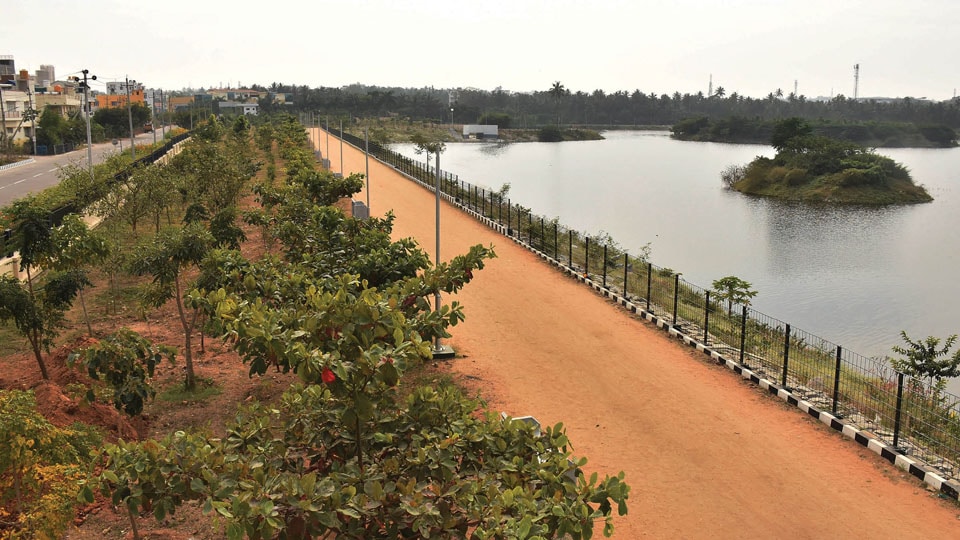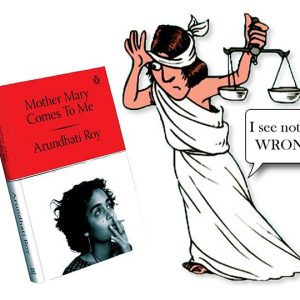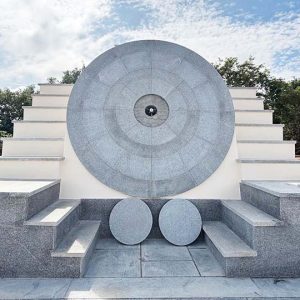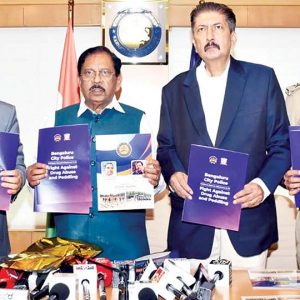High-density plantations implemented at Hebbal Lake and near Cheluvamba Park; more areas identified
Mysore/Mysuru: The Forest Department has set its sights on increasing the green cover in city as part of its strategies to mitigate the effects of climate change. For this, they have adopted a policy ‘forest within the city’ and has officially implemented the concept of urban forestry.
Incidentally, as part of the World Environment Day last June, Union Minister for Environment, Forests and Climate Change Prakash Javadekar announced the launch of his Ministry’s ‘Nagar Van’ (Urban Forest) scheme, which aims at developing 200 urban forests across the country over the next five years.
He urged at least 200 Municipalities and Corporations across the country to develop plans for implementing the scheme. The scheme in part will be paid for by the CAMPA (Compensatory Afforestation Fund Act, 2016) funds, the Minister said.
To increase green cover
In Mysuru, much before the announcement of the Minister, the Forest Department had begun work on developing urban forest with an aim to decrease the rising temperature and humidity. Inadequate tree cover in city area has driven the Department to explore this concept at a couple of places. Urban forestry has been largely confined to institutional planting. Here, we have evolved a blueprint to increase green cover, Deputy Conservator of Forests (DCF) Dr. K.C. Prashanth Kumar told Star of Mysore.
Under the scheme, indigenous or native varieties of trees have been planted to create urban forests. Aiming to cleanse the city of its air pollution, the Department is taking a stand against climate change through forestry. Trees help moderate temperatures especially in cities where heat, radiated from concrete buildings and roads, makes them warmer. They also whittle down levels of Ozone, Sulphur dioxide and particulate matter, remove large quantities of Carbon dioxide from the atmosphere and release oxygen.

Hebbal Lake and near Cheluvamba Park
Urban forest — urban high-density plantation — concept has been implemented in vacant spaces of Hebbal Lake that has been rejuvenated now. Native saplings have been planted near the lake bund and at the middle of the vacant space where tree rows have been created. Over 1,130 saplings have been planted.
It has also been implemented behind Cheluvamba Park at Vontikoppal where initially a rose garden was planned. More than 500 native varieties of plants have been planted. These plants will take three to four years to grow and the plantation will look like a forest within the city limits, the DCF added. The Forest Department has identified Lalithadrinagar, KSRTC Layout, Vijayanagar 4th Stage and J.P. Nagar as areas with potential to nurture urban forests.
Maximise air quality
Though the air quality of Mysuru is not as bad as Bengaluru, Chennai and Hyderabad or national capital New Delhi, the Department has taken up the scheme to maximise the air quality especially in summer and winter. The project aims at decreasing Carbon dioxide levels in atmosphere that is a result of depleting green cover.
The Department has adopted Miyawaki method of afforestation, developed by Japanese botanist Akira Miyawaki which, unlike commercial forestry, plants only native varieties of trees in selected ratios and sequences, creating multilayer, maintenance-free forests and 100 percent self-sustainable ecosystems.
The process uses only local species where the success rate of plant growth is 90 percent. The forests blend with the local ecosystem, last longer and can exist in urban spaces.
Native varieties
Prashanth Kumar said that over 30 species of native trees have been carefully selected and only those plants that will balance the environment have been selected for the scheme. The varieties include Peepal, Banyan, Holemaththi, Champak, Shivani, Takoma, Tabebuia, Neem, Jackfruit, Wild Badami, Gooseberry, Jamun, Halmaddi or dhoop trees, Fig, Honge (Indian Beech Tree), Mango and Sandalwood.
Good examples of urban forests
Warje urban forest in Pune — a 16-hectare barren strip of land encroached on by slums and builders transformed into a thriving oasis of biodiversity.
Shimla hosts a sanctuary of around 1,000 hectares that started off as the Shimla drinking water catchment forest.
In Southeast Delhi, the Asola Bhatti Wildlife Sanctuary was remoulded from degraded village common land to reserve forest.
Delhi’s Aravalli and Yamuna biodiversity parks have successfully recreated the natural habitats and ecosystems.
Gurgaon’s Aravalli Biodiversity Park created as a haven for native species in a degraded and mined landscape.








Recent Comments